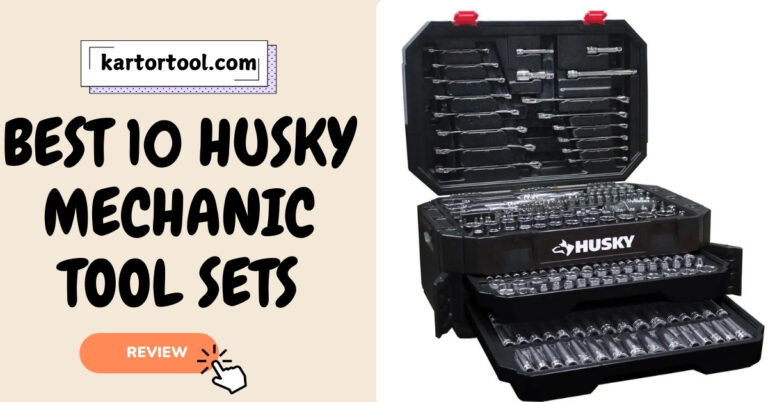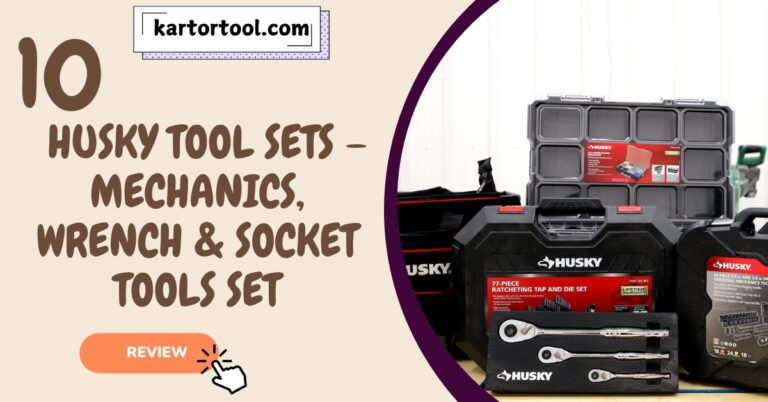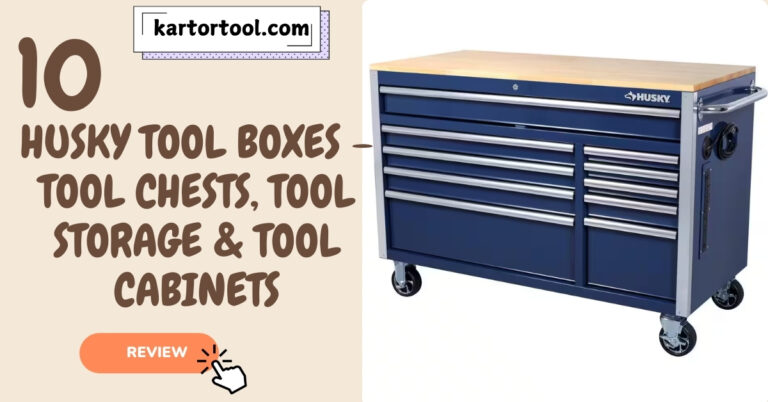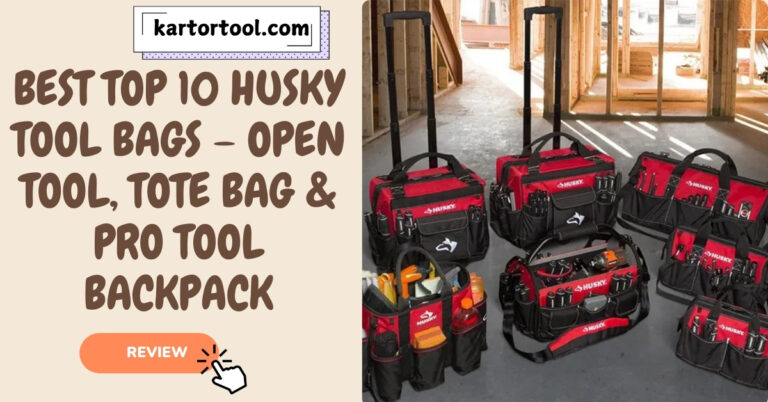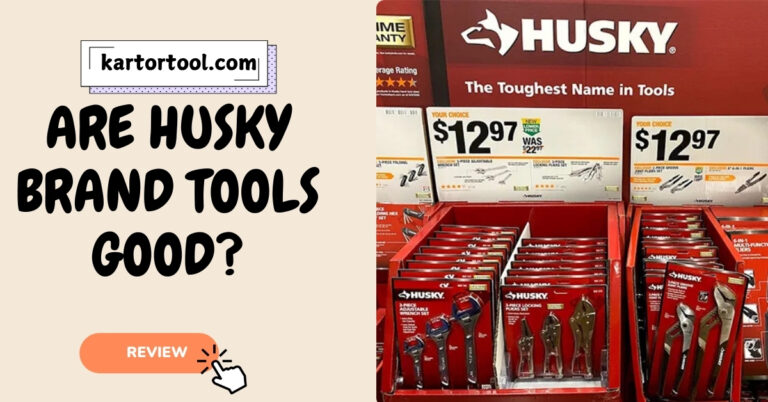The Ultimate Guide To How Heavy Is Husky Tool Box 2024
How Heavy Is Husky Tool Box 2024? Husky toolboxes are designed to be tough, rugged, and well-built. It makes them ideal for storing tools and equipment in the garage and workshop. The tools and equipment can be stored safely and securely in these strong and durable boxes. Whether it is a professional or an amateur working on a project, there is a perfect Husky tool box based on the size and style.
If you want to know how much a Husky toolbox weighs, then you are in the right place. Understand their weight because it determines where you put them, how to transport them, and how much equipment you can put inside them. This allows you to get the most out of your tool box while not having to sacrifice your workspace or personal safety.
Also Read Best Top 10 Husky Tool Bags – Open Tool, Tote Bag & Pro Tool Backpack
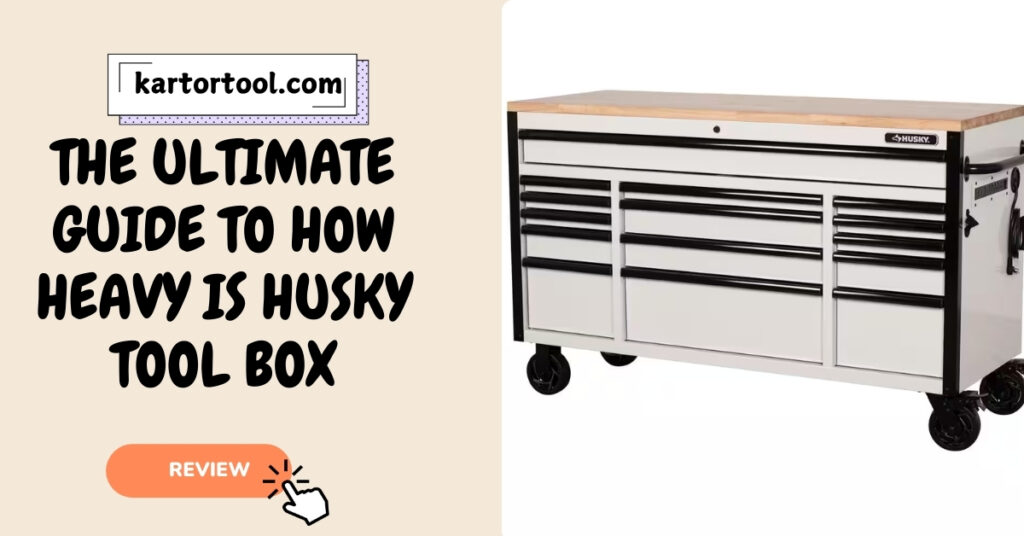
This article will explain how these tools’ weights are determined based on their construction materials or size. You will be able to determine the right box for your area, your equipment, and your purpose.
What Affects the Weight of a Husky Tool Box?
The general weight of a Husky tool box varies with the size, material, and added extras in the product. Larger toolboxes will not only contain more tools but also be heavier in construction than their small counterparts.
The density of the steel or plastic used in the construction of a Husky tool box increases its total weight. Other additions also include locks, drawers, and wheels that increase the weight of the box.
Also Read Who Makes Husky Tools
Steel vs. Plastic: How Material Choice Impacts Weight
These husky tool boxes are constructed of metal or any other hardwearing plastic. The body constructed from steel is heavier but tends to provide a better level of durability. They weigh less. They are used for lighter work or when mobility is an important factor. The type of material you will use for the construction of the tool box can greatly influence the weight and practicality of the tool box.
Impact of Added Features on Weight
Extra accessories like drawers, trays, or built-in locks will increase the weight of the Husky tool box. These add functionality, though. You must think about movability for your tool box if you have to move often.
Comparing Different Sizes of Husky Tool Boxes
Husky tool boxes are available in different sizes, such as portable tool boxes, small portable cases, and large tool chests. Portable variants known as smaller tool boxes often vary in weight between 10 and 30 pounds.
While the larger tool chests can weigh up to 100 pounds per unit even if they are empty. As tools are added, the weight becomes larger, so good advice is to consider the size that will be suitable for you.
Also Read Best Cheap Husky Tool Bags
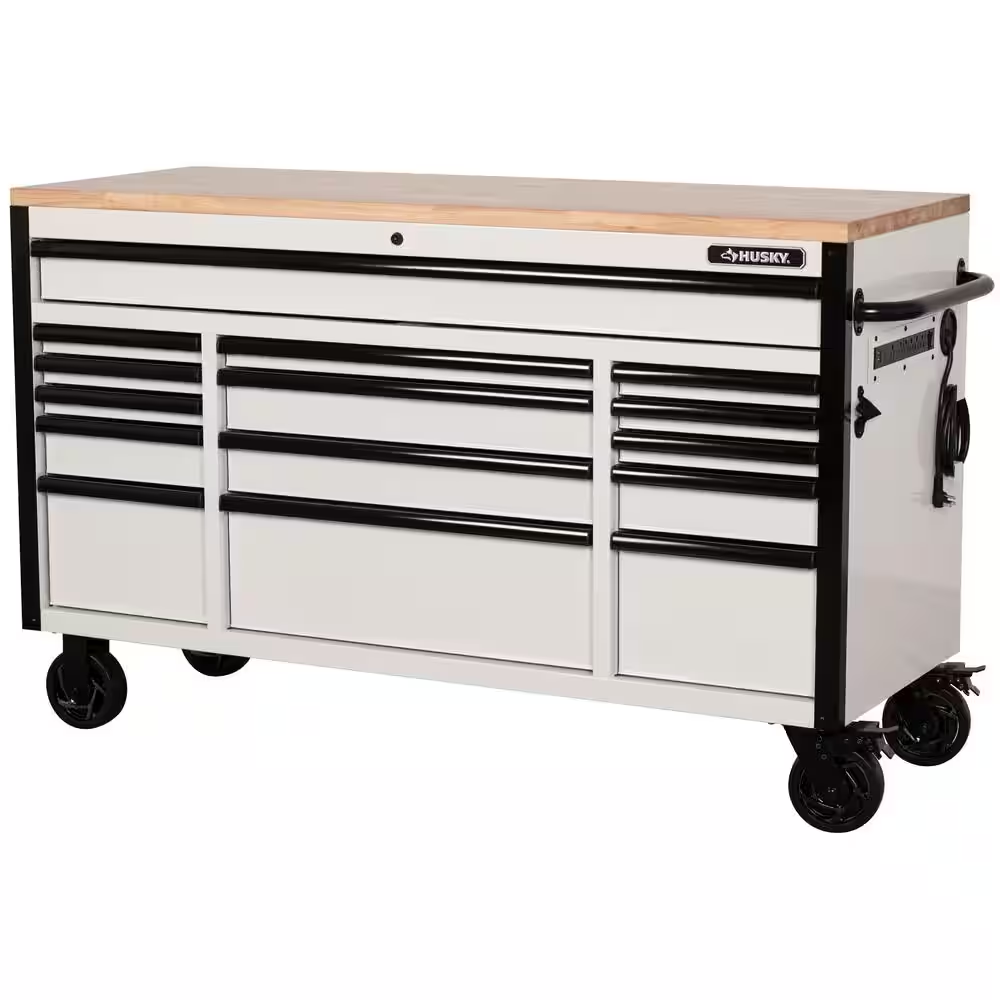
How to Safely Move and Transport a Heavy Husky Tool Box
Carrying a Husky tool box is challenging when it is filled with tools that are needed when working. So, proper actions must be observed to minimize the risk of danger or having an asset destroyed. If possible, choose a model which has wheels, or a carrying handle affixed to it for easier transport.
Having a large toolbox, they must use a doll or some piece of equipment to help them lift the toolbox. It’s always important to distribute the weight well while loading tools to avoid the tipover.
Materials Used in Husky Tool Boxes and Their Impact on Weight
Several factors determine the weight of a Husky tool box. The kind of material used in making the tool box impacts its weight. The majority of Husky tool box products are made with steel material, plastic material, or both.
Steel models are much heavier than plastic ones, but they are much more strong and will protect your tools better. Plastic models are lighter and portable, but the security that they depict in rough user conditions may be desirable.
Also Read Best Top 10 Husky Rolling Tool Boxes
Tips for Managing the Weight of Your Husky Tool Box
Controlling the weight of your Husky tool box is very important to avoid accidents and to make the toolbox easy to carry. Whether you’re moving your tool box around the shop or loading it into a vehicle, here are some practical tips to handle the weight more efficiently:
- Utilize the wheels: In a situation where the Husky tool box being used has wheels, they must always be used for facilitation of movement. This lessens the stress applied to the load and facilitates the movement.
- Distribute the weight evenly: When placing tools in your tool box, try to balance the weight. The box will not easily tip over or will not be hard to open the drawers.
- Use a dolly for larger models: For the heaver toolboxes, it may be necessary to use a dolly or a hand truck for long-distance carrying.
- Remove unnecessary tools: Do not load your box with many tools because this makes it heavy, and mobility becomes a big challenge.
- Consider modular options: Husky tool boxes can also be installed in modular designs where parts of the box can be split to reduce the weight of the box when moving.
Also Read Best Top 10 Husky Tool Sets – Mechanics, Wrench & Socket Tools Set
Choosing the Right Husky Tool Box for Your Workspace
Special attention must be paid to two factors when selecting a Husky toolbox:
- The ability to lift
- The need for portability of the box.
For example, if the place where you work is a workshop or a garage, you only occasionally lift your toolbox from one place to another. It will suit you best to choose a heavy-duty and very durable tool box made of steel. But, portability is an issue. A smaller and less massive box means the same functionality can be used more comfortably.
Final Thoughts
The weight of a Husky tool box must be well understood so that the appropriate choice can be made depending on the working environment. Weight plays a role in how you move and place the chest, as well as what tools you can fit into it. A lighter chest will be more portable, while a heavy-duty one will be sturdy and heavier.
Also Read Best Top 10 Husky Tool boxes – Tool Chests, Tool Storage & Tool Cabinets
Factors such as the material of the tool box, size, and features will guide you in choosing a tool box that meets your common needs without affecting safety and functionality.
It’s essential to consider these factors so that you can make the right decision on which Husky tool box suits your projects. Ready to find the right fit? Learn about all the Husky tool boxes available and what style is the best one for your tools and storage.
FAQs
What factors determine the weight of a Husky tool box?
The size of a Husky tool box, the type of materials, and extra parts all impact the box’s weight. Steel boxes, which are larger than plastic boxes, are usually much heavier than plastic ones.
Are Husky tool boxes portable?
Most Husky tool box have wheels or handles to ease their movement from one location to another. Bigger models can be rather bulky, so their weight must primarily be chosen to your needs.
How can I safely move a heavy Husky tool box?
When an individual needs to shift a toolbox, they must use models with wheels or a dolly. Also, make sure to distribute the weight evenly to ease handling.
What are the differences between steel and plastic Husky tool boxes?
These steel tool boxes are heavier as they are more durable, and protect the tools in the best way. Plastic models are lighter in weight, so they are more portable and can be used for lighter jobs only.
How can I manage the weight of my Husky tool box?
Use wheels to manage weight, divide tools into equal halves, and remove unnecessary ones. Toolbox models must be taken into consideration to save weight during transportation.


